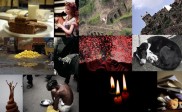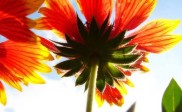Tips for Capturing Wonderful Nature Portraits
Capturing wonderful nature photos
They say that most people think through images, i.e. when one hears a word or a phrase, he or she starts getting images in their minds. And if we are talking about us, photography-lovers, here the situation is even worse, as we already see the world around us as images.
So, why am I talking about all of this? Well, I want to ask you: what association/picture do you get in your mind when hearing the word “nature”?
I talked to some fellow photographers and what I heard was: landscape, macro, animal, mountain, cloud… they described wide-angle landscapes depicting greatness and might of nature, clouds running over the gloomy sky…
But that’s not the sole approach of shooting nature. Along with grand landscapes, some photographers enjoy taking so called “intimate” photographs, photos depicting everything that can be found by closely inspecting and interacting with all the textures, shapes and forms that can be seen below, behind and above you.

Photo by Marina Tatarenko
This kind of photography resembles the process of photographing people; when in the picture a photographer is trying to catch the very inside of a person. All moods and character traits can be portrayed through freckles and moles, curves of hands and stature, wrinkles near eyes. Every detail, texture, form, etc is important and can reveal a lot about the subject. It’s shot closely, and in some way intimately.
So you can try to apply this approach when shooting nature. It can be a new experience
So here are some tips on how to try this out.
1. What’s the Idea?
The idea of this intimate nature shooting approach is to show the mood of nature in its details, associations, stereotypes. Under the mood’ we can also understand the state’ – tranquility, joy, expectation, sadness. Just like with people. Different angles of shooting, light, colors (their saturation/desaturation, or even converting an image into black-and-white) may help you in achieving this goal.

Photo by Marina Tatarenko
2. How to Shoot and How Not
Although intimate nature photography is about details, it doesn’t mean that you should only shoot Macro photos. So focus on details – structure, texture, color, – but within the frame. And what is even more important, pay attention to the details of your subject, which occur just like in portraits within a moment. Play with the surroundings to emphasize the mood of the subject and its features.

Photo by Marina Tatarenko
In this shot you can see a light bokeh on the top of the frame. In fact it’s the reflection of sun in the river far below. So try to cooperate with the surroundings to reach the result you want.
3. What Lens to Use
Well, as like in any other situation, the choices are a zoom or a fixed focal length. It depends on which lens is available and which one you are more comfortable with.
What is important is to take into consideration your lens speed. Lenses with a fixed focal length are usually much faster than zooms. Fast lenses deliver more light to the focal plane, and that’s why they allow a faster shutter speed.
Also, each lens has its own way of color representation. That is, a Nikon 50mm f/1.8 AF gives softer colors than, for example, a Nikkor 85mm f/1.4D AF (according to my own opinion and color perception). So take this issue into account when choosing the lens. As intimate nature photography requires a definite color mood. Surely, it’s possible to change colors in Photoshop, but why to waste time later on post-processing, if you can do it in-camera.
-Focal length: Don’t use a wide-angle lens as it distorts true proportions when making a close-up photo. For a well proportioned representation choose something in the range between 50mm and 105mm.
-Aperture: Keep your aperture widely opened (try something from f 1.8 till 2.2) – it will give you a nice bokeh and pleasant blurring.

Photo by Marina Tatarenko

Photo by Marina Tatarenko
4. Post-processing
Some words about post-processing. Try to create an intimate, chamber-like mood using colors and framing. Desaturate the colors; make them look like pastel soft tones just to add intimacy to your shots. Converting the photos into black-white is also fine. It will help you show the play of light and shadow, and may even add a dramatic look to the shot. Still don’t oversaturate the photos.
Surely, I’m not insisting that it’s the only way to shoot nature. But I think it’s a good alternative to experience. One way or another, just try and then you will know if you like it or not.
Enjoy the shooting!




Very nice. I need a zoom lens for my Nikon. 300mm would be great to get those up close and personal shots of hard to get things.
Portraits